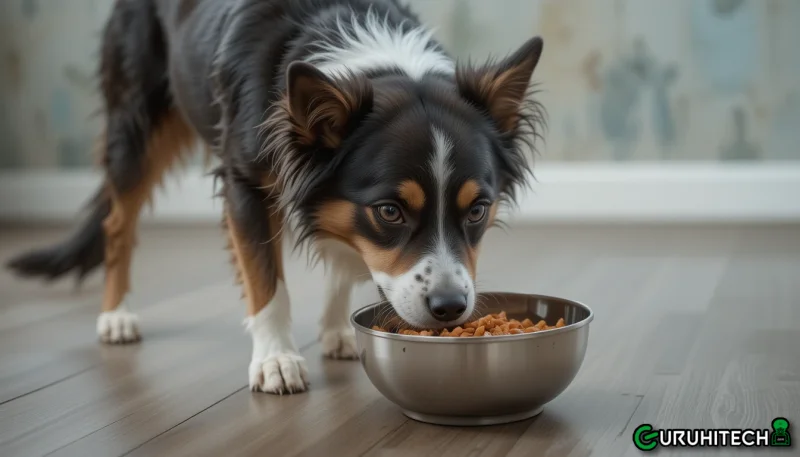Healthy and Grain-Free: The Smart Choice for Your Dog’s Diet

In recent years, pet owners have become increasingly aware of the importance of providing a nutritious and balanced diet for their canine companions. As a result, the demand for grain-free dog food options has surged, reflecting a growing understanding of the potential benefits associated with such diets. While grains have long been a staple in conventional pet foods, emerging research suggests that eliminating these ingredients may lead to improved health outcomes for certain dogs. Grain-free diets can offer a myriad of advantages, particularly for those with food sensitivities, allergies, or specific dietary needs.
Moreover, these diets often emphasize the inclusion of high-quality proteins, nutrient-rich vegetables, and healthy fats, fostering optimal energy levels, skin health, and overall vitality. As a responsible pet owner, it’s essential to consider the unique requirements of your dog and to make informed choices about their nutrition. This article will delve into the rationale behind choosing a grain-free diet, explore the key ingredients that contribute to your dog’s health, and provide practical tips for transitioning to a grain-free lifestyle. Ultimately, making the smart choice in your dog’s diet can lead to a happier, healthier, and more vibrant life for your furry friend.
Benefits of Healthy Grain-Free Dog Food
Healthy grain-free dog food can offer numerous advantages for pets, particularly those with sensitivities to grains or specific dietary restrictions. By focusing on high-quality proteins and nutrient-dense ingredients, this type of diet not only supports optimal digestion but also enhances energy levels and overall vitality. Many grain-free options incorporate wholesome fruits and vegetables, which provide essential vitamins and minerals while promoting a well-rounded nutritional profile for dogs.
Additionally, healthy grain-free dog food often contains alternative carbohydrate sources that are less likely to cause allergic reactions in sensitive dogs. Ingredients such as sweet potatoes, peas, and lentils serve as excellent substitutes, ensuring that pets receive necessary carbohydrates without the potential adverse effects of traditional grains. This dietary approach not only improves skin and coat health but can also contribute to a healthier weight, reducing the risk of obesity and related health issues. Overall, transitioning to a grain-free diet can lead to significant improvements in a dog’s quality of life.
Key Ingredients in Grain-Free Diets
High-quality proteins are central to healthy grain-free dog food, with sources such as chicken, beef, fish, and lamb commonly included to support muscle development and overall health. These proteins are typically accompanied by healthy fats, such as those derived from fish oil or flaxseed, which promote a shiny coat and healthy skin while also providing essential fatty acids that can aid in maintaining cognitive function.
In addition to proteins and fats, healthy grain-free dog food incorporates a variety of fruits and vegetables, which not only enhance flavor but also deliver vital antioxidants and micronutrients. Ingredients like blueberries, carrots, and spinach contribute beneficial phytonutrients that support immune function and overall well-being. The inclusion of these diverse components ensures that dogs receive a balanced diet rich in essential nutrients without the challenges posed by traditional grain-based formulas.
Transitioning Your Dog to Grain-Free
When transitioning your dog to healthy grain-free dog food, it is important to do so gradually to avoid gastrointestinal upset. Start by mixing a small amount of the new grain-free food with your dog’s current diet, gradually increasing the ratio of the new food over the course of 7 to 10 days. This slow introduction allows your dog’s digestive system to adjust to the new ingredients and flavors, minimizing the risk of diarrhea or other digestive issues. Monitoring your dog’s reaction during this period is crucial; look for any signs of discomfort or adverse reactions, and adjust the transition pace accordingly.
Additionally, it is beneficial to observe any changes in your dog’s energy levels, coat condition, and overall health during the transition. Healthy grain-free dog food can promote enhanced vitality and an improved appearance, but individual dogs may respond differently. If you notice positive changes, such as increased energy and a shinier coat, this often indicates a successful transition. However, if concerns arise, consulting a veterinarian can provide valuable guidance tailored to your dog’s specific needs, ensuring a smooth transition to a healthier diet.
In conclusion, transitioning to a healthy and grain-free diet for your dog can offer numerous benefits, including improved digestion, enhanced energy levels, and healthier skin and coat. As pet owners become increasingly aware of the importance of nutrition, opting for high-quality, grain-free options can help ensure that our canine companions receive the essential nutrients they need to thrive. By consulting with a veterinarian and carefully selecting appropriate food products, you can make informed decisions that support your dog’s overall well-being. Ultimately, investing in a nutritious diet will not only contribute to your pet’s health but also strengthen the bond you share as they lead a happier, more active life.
Ti potrebbe interessare:
Segui guruhitech su:
- Google News: bit.ly/gurugooglenews
- Telegram: t.me/guruhitech
- X (Twitter): x.com/guruhitech1
- Bluesky: bsky.app/profile/guruhitech.bsky.social
- GETTR: gettr.com/user/guruhitech
- Rumble: rumble.com/user/guruhitech
- VKontakte: vk.com/guruhitech
- MeWe: mewe.com/i/guruhitech
- Skype: live:.cid.d4cf3836b772da8a
- WhatsApp: bit.ly/whatsappguruhitech
Esprimi il tuo parere!
Ti è stato utile questo articolo? Lascia un commento nell’apposita sezione che trovi più in basso e se ti va, iscriviti alla newsletter.
Per qualsiasi domanda, informazione o assistenza nel mondo della tecnologia, puoi inviare una email all’indirizzo [email protected].
Scopri di più da GuruHiTech
Abbonati per ricevere gli ultimi articoli inviati alla tua e-mail.
